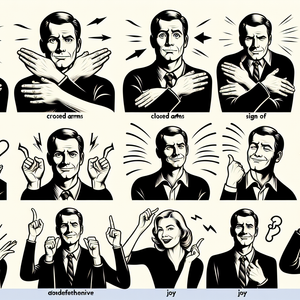The Hidden Job Market: Finding Entry-Level UI Design Positions

The hidden job market consists of positions that are not publicly advertised. Various studies suggest that a significant portion of job openings—estimates ranging from 60% to 80%—are filled through referrals and word-of-mouth rather than through traditional job postings. For UI designers, tapping into this market could be the key to landing a coveted position. Understanding how to navigate this landscape can make a substantial difference in your job search.
Networking: The Key to Unlocking Opportunities
Networking is arguably the most powerful tool in any job search, especially for entry-level positions. Here are some effective networking strategies that aspiring UI designers can employ: 1. **Attend Industry Events**: Conferences, workshops, and local meetups serve as excellent venues for connecting with industry professionals. Events such as UX Design conferences or tech meetups offer opportunities to engage with potential employers and mentors. For instance, attending an annual UX conference like UXPA International can lead to valuable conversations and contacts that may result in job referrals. 2. **Informational Interviews**: Reaching out to seasoned UI designers for informational interviews can yield insights into the industry and uncover unadvertised positions. Prepare thoughtful questions that reflect your interest and knowledge about their work. For example, expressing admiration for their portfolio can open the door for them to share job leads or insights into upcoming openings. 3. **Utilize Alumni Networks**: Your school’s alumni network can be an invaluable resource. Many universities host career services or networking events that connect students with alumni in their desired fields. Don’t hesitate to reach out to alumni through platforms like LinkedIn, asking for guidance or introductions that could lead to job opportunities.
Leveraging Social Media
Social media platforms have become essential tools for job searching in creative fields like UI design. Here’s how aspiring designers can make the most of these platforms: 1. **LinkedIn**: Optimize your LinkedIn profile by showcasing your design projects, skills, and interests. Regularly share relevant content, engage with industry posts, and connect with professionals in the field. Joining UI/UX groups on LinkedIn can also facilitate participation in discussions about job opportunities. 2. **Twitter**: Following industry leaders, companies, and design communities on Twitter is a great way to stay informed. Participating in Twitter chats related to UI design can help you connect with others in the field. Utilizing hashtags such as #UXJobs or #UIDesign can lead you to job postings shared by the community. 3. **Behance and Dribbble**: These platforms not only allow designers to showcase their work but also serve as networking hubs. Engaging with others’ projects, seeking feedback, and connecting with potential employers can all enhance your visibility and opportunities within the design community.
Engaging with Online Communities
Online communities are treasure troves of information and connections that aspiring UI designers can tap into: 1. **Reddit**: Subreddits such as r/userexperience and r/web_design often provide valuable insights into job openings and industry trends. Engaging in discussions within these communities can help you establish your presence and build connections with other professionals. 2. **Slack and Discord Groups**: Numerous design-focused communities exist on platforms like Slack and Discord. Joining these groups allows you to share your work, seek advice, and learn about job openings. Participating in collaborative projects can also enhance your skills and visibility. 3. **Facebook Groups**: Many Facebook groups cater specifically to UI design job seekers. These groups frequently share job postings and resources, making them an excellent way to stay informed about hidden opportunities that might not appear on traditional job boards.
While the traditional job search may lead many aspiring UI designers to frustration, the hidden job market offers a pathway to success that is often overlooked. By actively networking, leveraging social media, and engaging with online communities, you can uncover unadvertised positions and gain valuable insights into the industry. Remember, persistence and genuine connections can open doors that may seem permanently shut. Embrace the journey of finding your first UI design role, and don’t hesitate to take the unconventional path—it might just lead you to your dream job. By employing these strategies, you can significantly increase your chances of finding and securing an entry-level UI design position in a competitive landscape.
Junior UI Designer
Tech startups, digital agencies, e-commerce companies like Shopify or Squarespace
Core Responsibilities
Collaborate with senior designers to create wireframes and prototypes for web and mobile applications.
Assist in user research and usability testing to gather feedback and improve design solutions.
Maintain design documentation and style guides to ensure consistency across projects.
Required Skills
Proficiency in design tools like Sketch, Figma, and Adobe XD.
Understanding of user-centered design principles and basic HTML/CSS knowledge.
Strong communication and teamwork skills to work effectively with cross-functional teams.
UX Research Assistant
Research firms, tech companies, product design teams at companies like Google or Microsoft
Core Responsibilities
Conduct user interviews and surveys to gather qualitative and quantitative data.
Assist in analyzing research findings to identify user pain points and preferences.
Create reports and presentations to communicate insights to design teams and stakeholders.
Required Skills
Familiarity with research methodologies and user testing techniques.
Strong analytical skills and the ability to synthesize complex data into actionable insights.
Proficient in tools like Google Analytics and survey platforms (e.g., SurveyMonkey).
Interaction Designer (Entry-Level)
Mobile app developers, gaming companies, SaaS providers like Adobe or Spotify
Core Responsibilities
Design interactive elements of digital products, ensuring they provide a seamless user experience.
Collaborate with developers to implement designs and ensure functionality aligns with user expectations.
Create and test interactive prototypes to validate design concepts with users.
Required Skills
Knowledge of interaction design principles and experience with prototyping tools (e.g., InVision, Axure).
Basic understanding of front-end development languages like HTML, CSS, and JavaScript is a plus.
Strong problem-solving skills and a creative mindset.
Visual Designer (Junior Level)
Advertising agencies, branding firms, media companies like BuzzFeed or Warner Bros
Core Responsibilities
Develop visual assets and graphics for websites, apps, and marketing materials.
Collaborate with UX designers to ensure visual design aligns with user experience goals.
Stay updated on design trends to bring fresh ideas and maintain brand consistency.
Required Skills
Proficiency in graphic design software such as Adobe Creative Suite (Photoshop, Illustrator).
Strong portfolio demonstrating visual design skills and understanding of typography and color theory.
Attention to detail and ability to work under tight deadlines.
Product Design Intern
Tech startups, product teams in larger companies, design consultancies like IDEO or Frog Design
Core Responsibilities
Support the product design team in creating sketches, wireframes, and design specifications.
Participate in brainstorming sessions and contribute ideas for new product features.
Assist in gathering user feedback and documenting design iterations.
Required Skills
Familiarity with design tools (Sketch, Figma) and a basic understanding of product design processes.
Strong willingness to learn and adapt in a fast-paced environment.
Good communication skills and the ability to collaborate with different teams.


